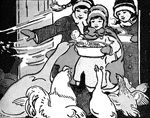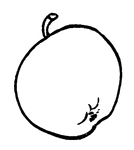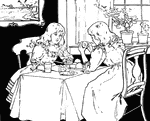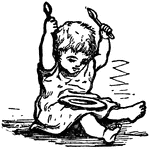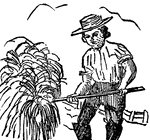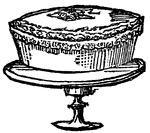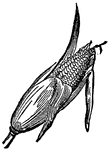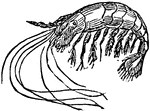
Date Palm
"Date Palm is a genus of palms, the most important species of which is the common date palm, the palm…

Heron
"Heron is the common name of birds of the genus Ardea. The herons are distinguished by having a long…

Tomato Plant
"Tomato, or Love Apple, is a plant of the natural order Solanaceæ. It is one of a genus of several…
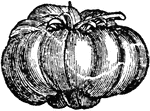
Tomato
"Tomato, or Love Apple, is a plant of the natural order Solanaceæ. It is one of a genus of several…
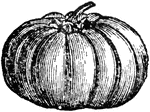
Tomato
"Tomato, or Love Apple, is a plant of the natural order Solanaceæ. It is one of a genus of several…

Turnstone
"Turnstone is a small genus of birds of the plover family, intermediate between the true plovers and…

Tussock Grass
"Tussock Grass is a large grass, same genus with the cock's-foot grass of the United States; native…
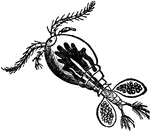
Cyclops communis Water Flea
"Water Flea is a popular name for minute aquatic Crustaceans such as daphnia, cypris, and cyclops. In…
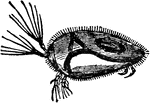
Cypris Unifasciata Water Flea
"Water Flea is a popular name for minute aquatic Crustaceans such as daphnia, cypris, and cyclops. In…

Daphnia Pulex Water Flea
"Water Flea is a popular name for minute aquatic Crustaceans such as daphnia, cypris, and cyclops. The…

Egg of Common Whelk
"Whelk is a popular name for a number of marine gasteropods, and especially applied to species of Buccinum…

Wigeon
"Wigeon is one of the most popular birds with the American sportsman. Length about eighteen inches;…
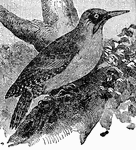
Green Woodpecker
"Woodpecker is the popular name of the old Linnæan genus Picus, now greatly divided. Woodpeckers…
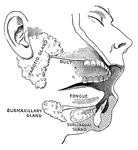
Salivary glands
"While the food is being chewed it is moistened by saliva, or spittle, which flows into the mouth from…

Lateral section of the chest
"A, a muscle which aids in pushing the food down the esophagus; B, esophagus; C,…
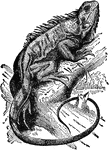
Iguana
"Iguana is a genus of saurian reptiles, natives of Brazil, Cayenne, the Bahamas, and neighboring localities…

Jacana
"The Jacana is a wading bird; a genus of grallatores. They are very light birds; and the wide surface…

Temple of Karnak
"Karnak is a village in Egypt built on the site of Thebes, on the bank of the Nile, and renowned for…
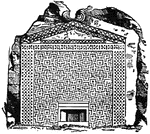
Tomb of Midas
"Midas was, in Greek legend, a King of Phrygia. For his kindness to Silenus he was promised by Dionysus…
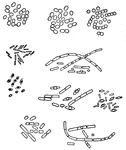
Milk bacteria
"Different Kinds of Milk Bacteria. It is not uncommon for a large number of person to be poisoned from…

Ostrich
"The Ostrich is the largest of all living birds, standing from six to eight feet in height, and has…
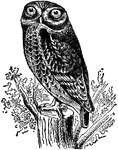
Rock Owl
"The owl is a popular name for any nocturnal, raptorial bird, of which about 200 species are known.…
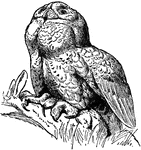
Great Snow Owl
"The owl is a popular name for any nocturnal, raptorial bird, of which about 200 species are known.…

Rafflesia Harrelli
"Fungi are either parasitic or, what is much the same thing, saprophytic– i. e., dependant upon…

Scybalium Fungiforme
"Fungi are either parasitic or, what is much the same thing, saprophytic– i. e., dependant upon…
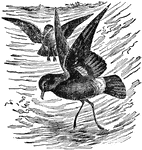
Stormy Petrel
"Petrel is a popular name for certain small oceanic birds of dusky plumage, nocturnal in habit, widely…

Remora
"The Remora, the sucking-fish, or sucker. By means of the suctorial disk, a transformation of the spinous…

Water Rice
"Rice is a well known genus of grasses, having panicles of one-flowered spike-lets, with two very small…
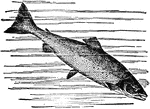
Salmon
"The Salmon is a well-known fish, inhabiting both salt and fresh waters, and ranking prominent among…
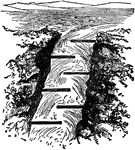
Salmon Ladder
"The Salmon is a well-known fish, inhabiting both salt and fresh waters, and ranking prominent among…

Shad
"Shad is the popular name of three anadromous fishes of the genus Clupea: (1) The allice or European…
!["Shark is an English popular name for any individual of the group Selachoidei. Sharks are scaleless, and the skin usually rough. They are numerous in tropical seas, becoming scarcer as they recede from the warmer regions, a few only reaching the Arctic circle. They are rapid swimmers, with great power of endurance; the larger sharks are exclusively carnivorous, and some of them extremely dangerous to man. They scent their food from a distance, and are readily attracted by the smell of blood or decomposing bodies. The flesh of sharks is coarse, but it is sometimes eaten. Their rough skin is employed by joiners to polish fine-grained wood, and by cutlers to cover the hilts of swords to make them firmer in the grasp. [Pictured] Egg of Scyllium Chilense"—(Charles Leonard-Stuart, 1911)](https://etc.usf.edu/clipart/16100/16199/sharkegg_16199_mth.gif)
Shark Egg
"Shark is an English popular name for any individual of the group Selachoidei. Sharks are scaleless,…

Shrimp
"Shrimp is a popular name for any individual of the genus Crangon, allied to lobster, crayfish, and…
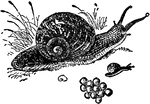
Snail
"Snail is the common name of gasteropodous mollusks. They feed chiefly on vegetable substances, though…

Sole
"Sole (Solea vulgaris) is a marine fish belonging to the flat fishes, of an oblong or oval form. These…
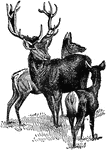
Stag
"Stag, or Red Deer, is a typical species of deer, occurring in the N. of Europe and Asia. It was once…

Tadpole
"The Tadpole is the larva of the anurous amphibia, sometimes so far extended as to include larvaæ…

Tadpole
"The Tadpole is the larva of the anurous amphibia, sometimes so far extended as to include larvaæ…
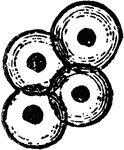
Frog Eggs
"The Tadpole is the larva of the anurous amphibia, sometimes so far extended as to include larvaæ…

Frog Egg
"The Tadpole is the larva of the anurous amphibia, sometimes so far extended as to include larvaæ…
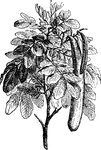
Carob Tree
Native to countries around the Mediterranean. The pods are often called locust-eans, are supposed by…

Two Egyptian Boats
"Two boats moored to the bank of the river by ropes and stakes. In the cabin of one, a man inflicts…
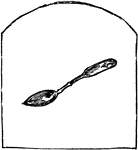
Spoon
An instrument consisting of a small concave basin with a handle, used in preparing or partaking of food.


